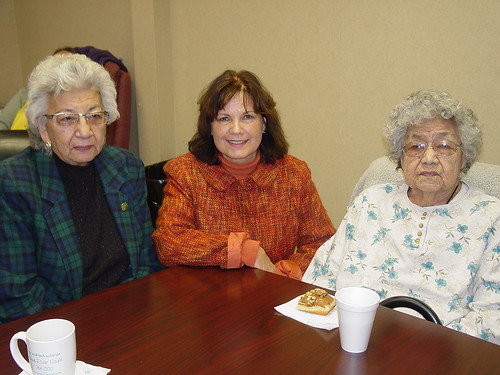USDA Rural Development South Dakota State Director Elsie Meeks recently awarded the Cheyenne River Sioux Tribe (CRST) Telephone Authority headquartered in Eagle Butte a $37.9 million USDA Telecommunication Infrastructure Loan to complete a total fiber to premises build out.
Attending the award ceremony was CRST Elders, Ione Lee and Delphine Red Fox. Delphine Red Fox‘s husband Steve Red Fox spent over 30 years working in the rural telecommunications industry and a majority of his time was with the CRST Telephone Authority. He was the first employee to retire from CRST Telephone Authority in 2005, a significant milestone for himself, his family and also for the company. Steve began his career in the 1960's with aerial plant construction and then moved into the copper underground plant in the 1970's as the company became a REA borrower.
Ione Lee’s memories of technology began when she was 13 year old girl in 1935; living in LaPlant, SD. She recalls that there were two telephones in LaPlant at that time and that telephones were a big deal. The telephones saved them time and energy as they would have to travel by horse or wagon and if lucky, by car and the train to communicate with others. The most interesting memory is the fact that people, including herself, used the railroad telegraph for communication and used morse code for the messages.
In 1958, Ione remembers that the CRST Tribal Council envisioned connecting all reservation residents by telephone. The telephone company that was privately owned in the area was purchased by the Tribe at that time with the purpose of developing utility infrastructure all over the reservation.
CRST Telephone Authority was established in 1958 by the Cheyenne River Sioux Tribe as a Native American owned Telecommunications Company and was the first Indian company to utilize the loan process from the Rural Electric Administration (REA). The company has over 1,800 miles of buried copper cable and the company service area today covers 4,600 square miles, including 20 communities, and over 3,400 subscribers.
To find out more about how USDA Rural Development programs can assist your community click here.

